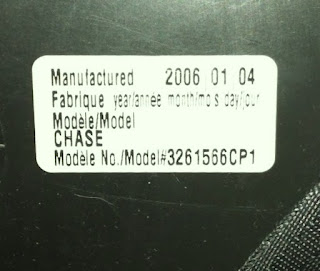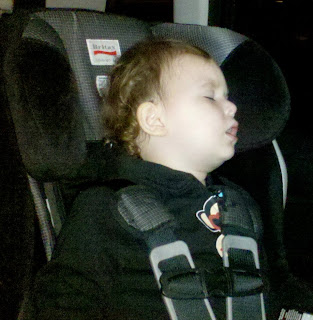I'm happy to be offering the 7th installment in the Car Seat Safety Series, written by Megan Arce, CPST (Certified Child Passenger Safety Technician) and mother of two little princesses. This is part 1 or 2 addressing various vehicle dangers, starting with projectiles.
VEHICLE DANGERS
Installing and using a child’s car seat are only part of
keeping our children (and our selves!) safe in a vehicle. There are several
other factors to consider when looking at vehicle safety on the whole. A few tweaks here and there to your regular
car routine could make everybody in your car safer. This week, we’re discussing
the danger of projectiles and next week we’ll cover seat belt entanglement, air
bags, children left unattended and children outside of the blind spot.
Projectiles
Anything in your vehicle that isn’t somehow attached to the vehicle
is a potential projectile flying object in a crash. In other words, everything is going to go
forcefully flying if you are in a crash, and the probability of bring struck
with one of these items is very high. The
5 pound purse on your passenger seat might not appear to be a danger, but with
crash forces taken into account, that same 5 pound purse would hit somebody at
175 pounds of force, and that is if you were only driving at 35 miles per hour
(factor much higher pounds of force for crashes at higher speeds: weight of object times x speed = pounds of force). People have been killed by their laptop
computers, groceries, tools, etc. A
toddler was almost scalped by his sippy cup.
Solutions? Keep as little in your vehicle as possible,
secure what is in your vehicle, utilize your trunk (sedans) or cargo cover
(SUVs). If your SUV did not come with
one, cargo nets, bungee cords and ratcheting straps can be used. I am overly prepared by nature, so I had a
hard time going bare minimum in my car, so this is what the back of my vehicle
looks like:
All items seen here are secured to the vehicle. Groceries go in the grocery net (stolen from
my husband’s SUV, but can be purchased at dealerships). I utilize the storage area under the grocery
net and my stroller is secured with a bungee cord of its own as well.
Behind my passenger seat (under my
rear-facing daughter’s seat), a bungee cord runs through a plastic tub to
secure it to the metal rails under the seat. This tub has a locking to secure its contents (snacks mainly!).
By no means is this a fail-safe method (bungee cords can
snap under extreme forces), but it all makes me feel better and at the very
least, could help slow the projectiles down. I have to remember to re-hook the
stroller each time it goes back in the car (which quickly became habit and only
takes a few extra seconds) and nothing else requires any maintenance, just the
initial securing.
 Items like iPods and Gameboys, things intended to keep them
entertained, could end up causing a child great harm as well -- soft toys and
books are the best option (my kids like stickers a lot too!). I keep a soft basket in between my two
children full of paper books and plush animals (both of which we rotate
frequently to keep them interested). The
basket is secured with the middle lap/shoulder belt running through it (holes
cut on either side).
Items like iPods and Gameboys, things intended to keep them
entertained, could end up causing a child great harm as well -- soft toys and
books are the best option (my kids like stickers a lot too!). I keep a soft basket in between my two
children full of paper books and plush animals (both of which we rotate
frequently to keep them interested). The
basket is secured with the middle lap/shoulder belt running through it (holes
cut on either side).
Other potential projectiles to consider: unbuckled
passengers! Not only can the driver be ticketed if a passenger in the vehicle
does not buckle up, but that person could become THE object that causes other
passengers grave injury when the bodies make head-to-head contact at high
speeds (again, weight of object times x
speed = pounds of force). This goes
for the family dog as well! Pets need to be secured both for their safety, and
the safety of the passengers in the vehicle! Factory installed pet barriers are
a safe option if a pet frequently rides in your car (pressure mounted barriers
can themselves become a projectile and are not recommended), as are pet
harnesses. Pet crates can easily be
secured with a ratcheting strap as well.
Oh, and one other thing. Make sure you always have booster seats strapped in, even when no one's in them!
Oh, and one other thing. Make sure you always have booster seats strapped in, even when no one's in them!
Next week, I'll address other dangers, such as seat belt entanglement, air bags, unattended children, and children outside your vehicle in your blind spot.
Click the following links to learn more about keeping your kids safe in the car:
Car Seat Safety Series
Part 1 -- Airplane safety
Part 2 -- Car seats and winter coats: how to keep the little ones warm (and SAFE)
Part 3 -- Extended rear facing and extended harnessing
Part 4 -- LATCH vs. seat belt
Part 5 -- Correct harness use
Part 6 -- Car Seats Expire, Too!



















